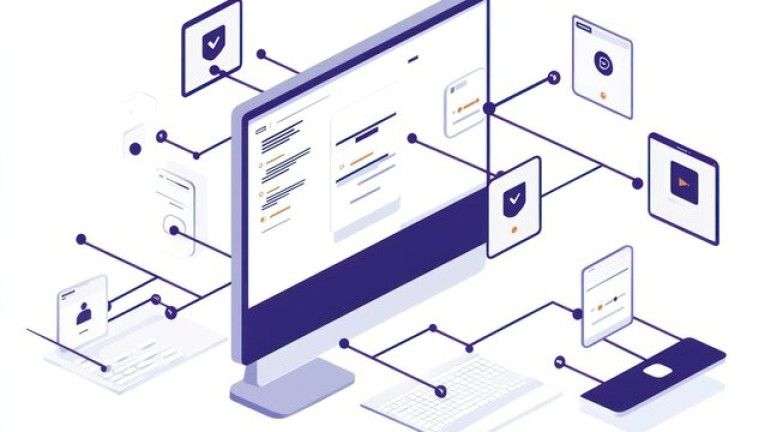As someone who has closely followed technological innovations in various sectors, I’ve always been intrigued by how blockchain could revolutionize industries. One area where its potential seems particularly powerful is agriculture. Agricultural practices have seen slow, incremental improvements over the years. However, with the rise of blockchain technology, the landscape is changing rapidly, offering farmers, suppliers, and consumers alike new ways to interact, transact, and trust the processes behind food production. I’m excited to explore the role of blockchain in agriculture—how it works, its benefits, challenges, and what it means for the future of food systems.
Table of Contents
What is Blockchain and How Does It Apply to Agriculture?
At its core, blockchain is a decentralized, digital ledger that records transactions across many computers. It’s designed to be secure, transparent, and immutable. When a new transaction happens, it’s recorded as a “block,” and once verified, it is added to a “chain” of previous transactions. This process eliminates the need for a central authority to verify transactions and provides an unalterable record.
In agriculture, blockchain serves as a tool for increasing transparency, improving supply chain management, enhancing traceability, and reducing fraud. By implementing blockchain in agriculture, every step of the food production process—from planting to harvesting to transportation and sale—can be tracked in real-time and stored securely.
Blockchain Use Cases in Agriculture
One of the most immediate applications of blockchain in agriculture is in supply chain management. For instance, I can trace the origin of my food product from farm to table, ensuring it hasn’t been tampered with or misrepresented. This transparency helps build trust between producers and consumers, as well as between different parties in the supply chain, such as farmers, processors, wholesalers, and retailers.
Consider a scenario where a consumer wants to know the origin of their tomatoes. With a blockchain-enabled system, I can scan a QR code on the packaging, which will provide detailed information about the tomato’s journey from seed to supermarket shelf. This includes data such as the farm where it was grown, the methods used to cultivate it, and the exact times it was harvested and transported.
Benefits of Blockchain in Agriculture
1. Enhanced Traceability
The ability to track products throughout the entire supply chain is one of the most valuable features of blockchain technology. I can trace the entire journey of a crop, and if something goes wrong—say, a batch of tomatoes becomes contaminated—I can pinpoint where the problem originated. This allows for faster responses and more targeted solutions, helping to avoid widespread contamination.
2. Transparency and Trust
In agriculture, transparency is crucial. Farmers, suppliers, and consumers can all benefit from knowing that data related to a product’s origin, processing, and distribution is securely recorded. This builds trust in the system. For instance, if I buy organic apples, blockchain can verify that the apples were indeed grown without synthetic pesticides, as the entire process is logged and available for review.
3. Reduced Fraud
Agriculture has long struggled with issues like product misrepresentation and fraud. For example, a farmer may claim that their product is organic, but without a way to verify that claim, it’s hard to know for sure. Blockchain reduces the risk of fraud by providing a verifiable, immutable record of each transaction, including the quality and authenticity of agricultural products.
4. Streamlined Payments
Blockchain can also streamline payments between parties in the agricultural supply chain. Traditionally, payments can be delayed due to the need for intermediaries or complex accounting systems. Blockchain enables faster, more secure transactions with fewer middlemen, reducing costs and improving efficiency.
Challenges in Adopting Blockchain in Agriculture
1. High Initial Costs
While blockchain offers numerous long-term benefits, the initial implementation costs can be high. For farmers, especially smallholders, investing in blockchain systems can seem daunting. The cost of hardware, software, and training may deter many from adopting the technology.
2. Lack of Awareness
Many in the agricultural sector are still unfamiliar with blockchain technology. Education and awareness are necessary for widespread adoption. Without a clear understanding of how blockchain works and how it can benefit them, farmers and supply chain actors may be hesitant to invest.
3. Integration with Existing Systems
Integrating blockchain with existing agricultural systems can be complex. Many farmers still rely on traditional methods of record-keeping and may not have the infrastructure to transition to a digital platform. The technological gap between modern farming methods and older systems can be a significant barrier to adoption.
4. Data Privacy Concerns
Blockchain is a public ledger, meaning that the data stored on it is accessible to anyone with the right tools. While this transparency is often a benefit, it could raise privacy concerns, particularly when dealing with sensitive information like financial transactions or proprietary farming methods. Ensuring that privacy is maintained while benefiting from blockchain’s openness is an ongoing challenge.
Real-World Examples of Blockchain in Agriculture
Example 1: Walmart and IBM’s Food Trust Network
Walmart has partnered with IBM to create a blockchain-based system for food traceability. The Food Trust Network uses blockchain to track the journey of food products from farm to shelf. This system allows customers and retailers to trace the origin of produce, reducing the risk of contamination and ensuring product quality. In one example, Walmart was able to trace a mango shipment in seconds instead of days, demonstrating the speed and efficiency of blockchain technology.
Example 2: Provenance and the Seafood Industry
Provenance is a company that uses blockchain to provide transparency in the seafood industry. By using blockchain, Provenance allows consumers to track the origins of their seafood products, from the moment they are caught to when they reach the store. This not only ensures that the seafood is sustainably sourced but also helps combat illegal fishing by verifying the legitimacy of the catch.
Example 3: AgUnity and Smallholder Farmers
AgUnity, a blockchain platform, is focused on helping smallholder farmers in developing countries. The platform enables farmers to record transactions, track crops, and access financial services, all while building trust with buyers and suppliers. AgUnity’s blockchain-based system helps small farmers overcome issues like access to credit, market pricing, and fraudulent transactions.
Blockchain’s Impact on Sustainability in Agriculture
Sustainability is a growing concern in agriculture, with issues like food waste, resource management, and environmental impact becoming central topics. Blockchain can play a role in improving sustainability by enabling more efficient use of resources, reducing waste, and promoting sustainable practices.
For example, by providing detailed records of resource usage (such as water, fertilizers, and pesticides), blockchain can help farmers optimize their inputs, ensuring they use only what is necessary and reducing waste. Furthermore, blockchain’s traceability features make it easier to verify that crops were grown using sustainable methods, which could encourage consumers to make more environmentally conscious purchasing decisions.
Future Prospects for Blockchain in Agriculture
Looking ahead, I see blockchain technology as having a transformative effect on agriculture. With further advancements in technology, blockchain systems will become more user-friendly, reducing barriers to adoption for farmers and other supply chain participants. Additionally, as blockchain continues to gain mainstream acceptance, we can expect to see greater collaboration between tech companies, agricultural producers, and consumers, driving innovation and efficiency across the industry.
I also anticipate that blockchain could play a significant role in tackling global challenges such as food security and climate change. By improving traceability, reducing food waste, and encouraging sustainable farming practices, blockchain can help create a more resilient, transparent, and equitable agricultural system.
Conclusion
Blockchain has already begun to make a significant impact in agriculture, and its potential to improve transparency, traceability, and efficiency in the industry is undeniable. While challenges remain in terms of cost, education, and integration, the benefits of blockchain in agriculture are clear. As the technology continues to evolve and become more accessible, I believe that blockchain will play a crucial role in shaping the future of agriculture, making it more sustainable, efficient, and transparent for all stakeholders involved.





